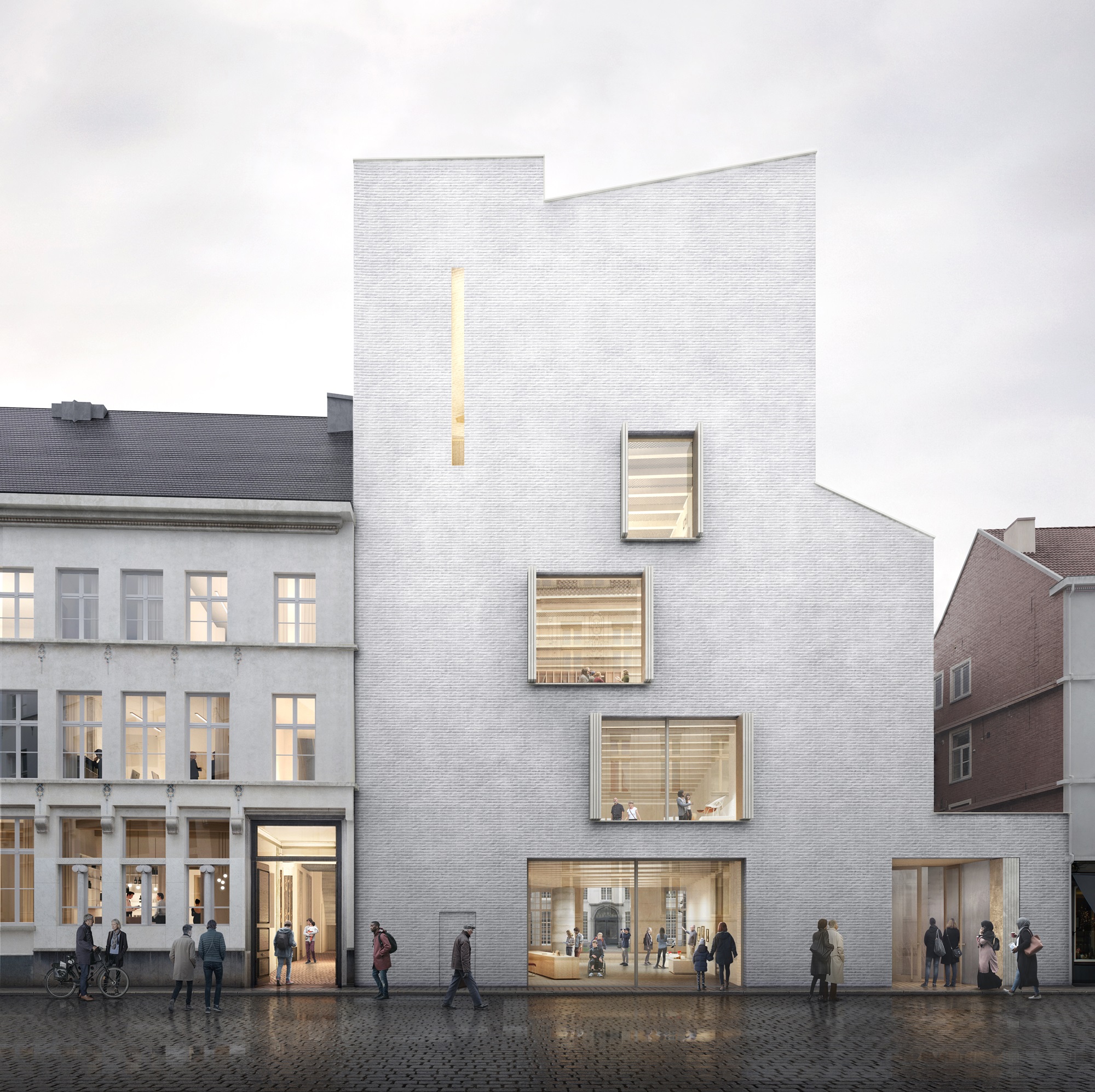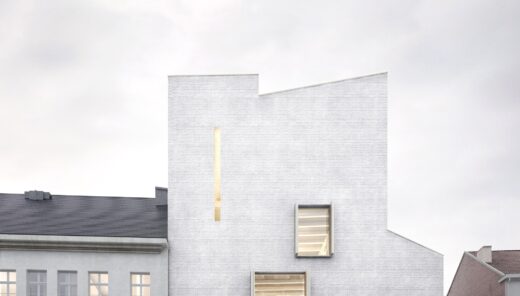Design Museum Ghent: a fossil-free museum of the future
In exactly one year, Design Museum Gent will reopen its doors with ambitious plans for the future. The renovation aims to transform the museum into a fossil-free, highly flexible space. Sweco is playing a crucial role in this transformation with an innovative technical design.
The Design Museum is getting an important new wing. DING will have five levels and will connect to the historical buildings of the Design Museum and the 1992 addition. British architect Carmody Groarke with ATAMA and RE-ST designed a volume that respects the historical surroundings while giving the Design Museum a recognizable face in the street. Alongside the 2,000 m² expansion, a large portion of the existing infrastructure will be addressed, excluding the historical buildings on Jan Breydelstraat. This encompasses three-quarters of the available museum space.
A new entrance building in timber construction
DING is entirely constructed from wood, and this is evident on the inside. On the ground floor, visitors will find the reception desk and shop. Above, there will be workshop spaces and temporary exhibitions. A spacious terrace overlooks the historical courtyard, the Gravensteen, and the Ghent skyline.
Underground, there will be toilets and a cloakroom, alongside spaces for art handling and restorations.

Reimagining the museum
With this significant addition, the designers have also reexamined the other buildings and spaces. Various barriers, voids, and stairs will be removed, making more museum space available. The museum will benefit from maximum freedom in layout and exhibition routes.
Our technical engineers ensure this freedom with smart building technology and a fine-meshed structure for electricity. Thoughtful positions of distribution boxes and network connection points in the floor and ceiling enable many temporary configurations. This also allows new technology to be easily integrated later on. Design Museum Gent aims to use digital applications to make visits more interactive.
With tension rails, the lighting can follow the same flexibility, enabling diverse lighting installations. Individually controllable, they showcase design objects in their best light.
By reimagining the museum, the existing infrastructure and the new wing blend seamlessly. Visitors will notice this in interior elements that are historical, postmodern, or contemporary. However, the comfort and technology must seamlessly connect through all volumes in this heterogeneous context, an extra challenge for our engineers. They mapped out the existing techniques and integrated state-of-the-art technology everywhere for a coherent museum experience and operation.
Copyright and architect: Carmody Groarke, ATAMA, RE-ST
We add a smart layer that offers the Design Museum much more flexibility, and enhances the interaction between the design objects and the visitor.
Sven De Turck, project manager
A sustainable approach tailored to valuable heritage
Anyone who has renovated knows that surprises can arise, and this is certainly true for heritage. Moreover, valuable heritage has specific requirements, meaning advanced techniques cannot just be added. With creativity, Sweco’s technical design team has made the techniques as invisible as possible in the heritage parts.
In a city aiming to be climate neutral by 2050, we also focus on sustainable high-efficiency technology. A low-noise four-way air-water heat pump feeds various emission elements, allowing simultaneous production of heat and cold by extracting heat from the cooling of another space.
Smart building management meticulously monitors performance and energy consumption and can adjust in real-time. By visualizing these parameters for visitors, Design Museum Gent aims to highlight its climate-neutral ambitions.
Optimal indoor climate for a valuable collection
For a museum, indoor climate is crucial. Despite variable occupancy, it must remain stable for exhibited objects and artworks. Our technical design guarantees better control and regulation of temperature and relative humidity, creating optimal conditions for conserving vulnerable objects. A high-quality HVAC system avoids pollution from dust and pollen, allowing the museum to include fragile objects in the collection or as loans for exhibitions, which was previously not possible.
Like design enthusiasts, our consultants look forward to October 3, 2026, when Design Museum Gent reopens. Although much of the technical design work disappears behind walls, ceilings, and floors, this achievement is a triumph.
Overig nieuws

Design Museum Ghent: a fossil-free museum of the future
Read more

Cyclostrade E411 enhances multimodal mobility in Walloon Brabant
Read more

Regional Office West Opened: High-Tech Systems Behind a Historic Façade
Read more
